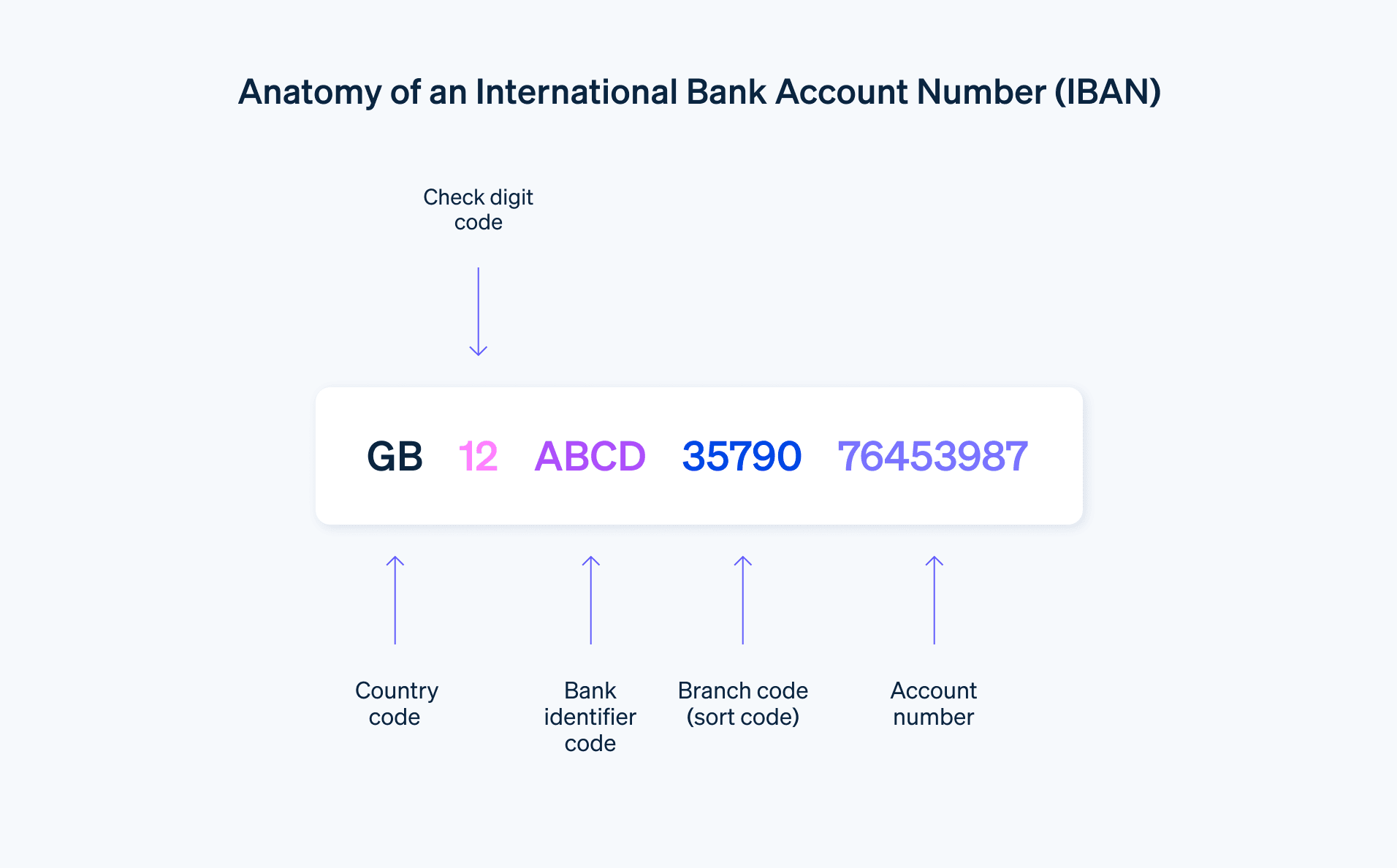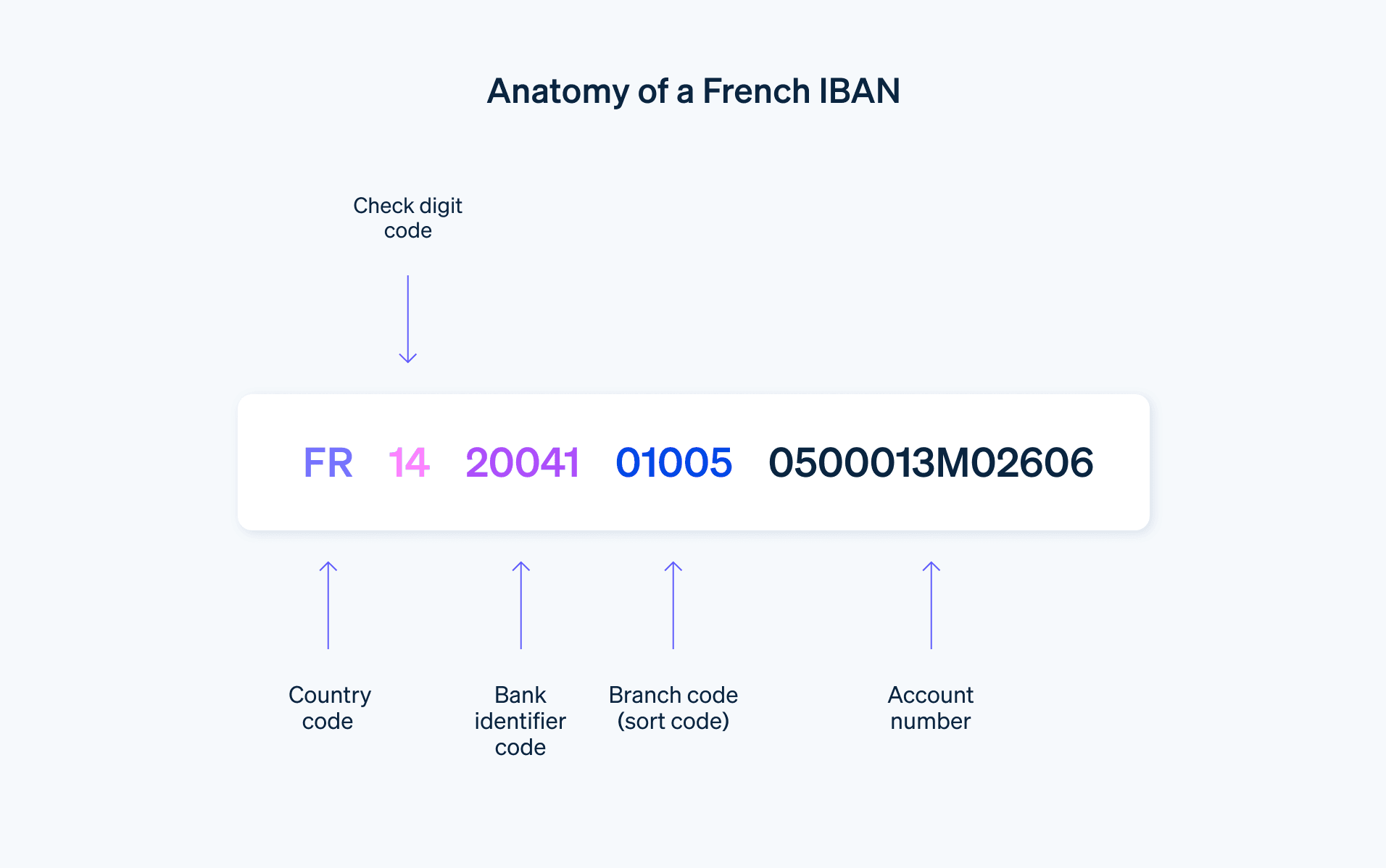Ett IBAN-nummer krävs för att tilldela betalningsmottagare vid internationella betalningar och betalningar inom Europa. Men vad är egentligen ett IBAN-nummer och hur är det strukturerat? I den här artikeln förklarar vi vad du behöver veta om hur IBAN-nummer är uppbyggda och var du hittar IBAN-numret för ditt konto.
Vad innehåller den här artikeln?
- Vad är ett IBAN-nummer?
- Hur är ett IBAN-nummer strukturerat?
- Hur många tecken består ett IBAN-nummer av?
- Hur kan man använda ett IBAN-nummer för att hitta ett kontonummer?
- Hur vet man vilken bank ett IBAN-nummer tillhör?
Vad är ett IBAN-nummer?
Ett IBAN-nummer är ett standardiserat internationellt bankkontonummer, det vill säga ett bankkontonummer som är giltigt över hela världen. IBAN står för "International Bank Account Number". Du behöver ett IBAN-nummer om du vill öppna ett konto i vissa länder (som Tyskland), eller om du vill att någon ska föra över pengar till dig. Detsamma gäller om du vill ta emot utbetalningar – de flesta e-handelsplattformar kräver också ett IBAN-nummer.
Användningen av IBAN-nummer är nu standard i mer än 70 länder. USA, Kanada och Australien använder dock inte IBAN-systemet. När du gör eller tar emot en betalning med ett IBAN-nummer kontrolleras numren av banken. Om IBAN-strukturen bedöms vara giltig tas betalningen emot av den mottagande banken inom några minuter. För autogirobetalningar krävs också ett IBAN-nummer. Även omedelbara överföringar är möjliga, men det kan ta en eller två dagar innan beloppet krediteras till mottagarens konto.
Om en betalning görs till ett IBAN-nummer som inte finns kommer den inte att genomföras. Men om det felaktiga IBAN-numret finns och det tillhör en annan person kommer den personen att få pengarna. I sådana fall måste du kontakta din bank så att de kan avbryta överföringen så snart som möjligt. Mottagaren är dock inte skyldig att återbetala pengarna till dig. Du kan läsa mer om detta ämne här.

Hur är ett IBAN-nummer strukturerat?
Det finns fasta regler för hur ett IBAN-nummer formateras: de två första tecknen är landskoden (t.ex. "DE" för Tyskland eller "FR" för Frankrike). Detta följs av ett tvåsiffrigt kontrollnummer och den nationella kontokoden BBAN (Basic Bank Account Number). Kontrollnumret används för att identifiera ditt bankkonto. Det kan till exempel förhindra felaktiga överföringar i händelse av att ett felaktigt nummer har angetts någon annanstans i IBAN-numret. Själva kontokoden består av clearingnumret och kontonumret. Dessa regler för IBAN-numrets struktur fastställs av European Committee for Banking Standards.
Här är två exempel på IBAN-strukturer:
- IBAN för Tyskland: DE89 3704 0044 0532 0130 00
- IBAN för Frankrike: FR14 2004 1010 0505 0001 3M02 606

I det första exemplet ovan representerar landskoden "DE" Tyskland, kontrollnumret är 89, clearingnumret är 37040044 och kontonumret är 0532013000.

I det andra exemplet representerar landskoden "FR" Frankrike, kontrollnumret är 14, följt av fem siffror för bankkoden, fem siffror för bankfilialen, 11 siffror för bankkontonumret och de två sista siffrorna ("06") är den nationella koden.
Hur många tecken består ett IBAN-nummer av?
IBAN-numret är alltid uppbyggt på samma sätt, men längden kan variera beroende på ursprungslandet. I vissa länder kan IBAN-numret vara så långt som 36 tecken (landskoden och upp till 34 siffror/bokstäver). I Tyskland och Storbritannien består ett IBAN-nummer av 22 tecken (landskoden följt av 20 siffror). Ett franskt IBAN-nummer består av 27 tecken och ett spanskt innehåller 24 tecken. IBAN-numret är giltigt i hela världen.
Hur kan man använda ett IBAN-nummer för att hitta ett kontonummer?
Eftersom IBAN-numret alltid har samma struktur är det lätt att hitta kontonumret. Om själva kontonumret är mindre än 10 siffror långt läggs nollor till i början för att fylla i de siffror som saknas.
Om du vill hitta ditt IBAN-nummer bör du kunna hitta det via din internetbank. Du kan även kontakta din bank eller använda en onlinekalkylator för att utröna din IBAN-struktur. Ditt IBAN-nummer finns ofta på ditt bankkort.
Om du vill vara säker på att ditt IBAN-nummer är korrekt innan du gör en banköverföring kan du prova ett valideringsverktyg online. Många banker utför IBAN-verifiering automatiskt som en del av sin överföringsprocess, och du hittar vanligtvis IBAN-kalkylatorer på din banks webbplats.
Hur vet man vilken bank ett IBAN-nummer tillhör?
Det finns ett snabbt sätt att dechiffrera vilken bank som gömmer sig i IBAN-numret: den tvåsiffriga landskoden och de två kontrollsiffrorna följs av clearningnumret, som börjar från den femte siffran i IBAN-numret. Clearingnumret fungerar som en unik identifierare för banken.
Innehållet i den här artikeln är endast avsett för allmän information och utbildningsändamål och ska inte tolkas som juridisk eller skatterelaterad rådgivning. Stripe garanterar inte att informationen i artikeln är korrekt, fullständig, adekvat eller aktuell. Du bör söka råd från en kompetent advokat eller revisor som är licensierad att praktisera i din jurisdiktion för råd om din specifika situation.